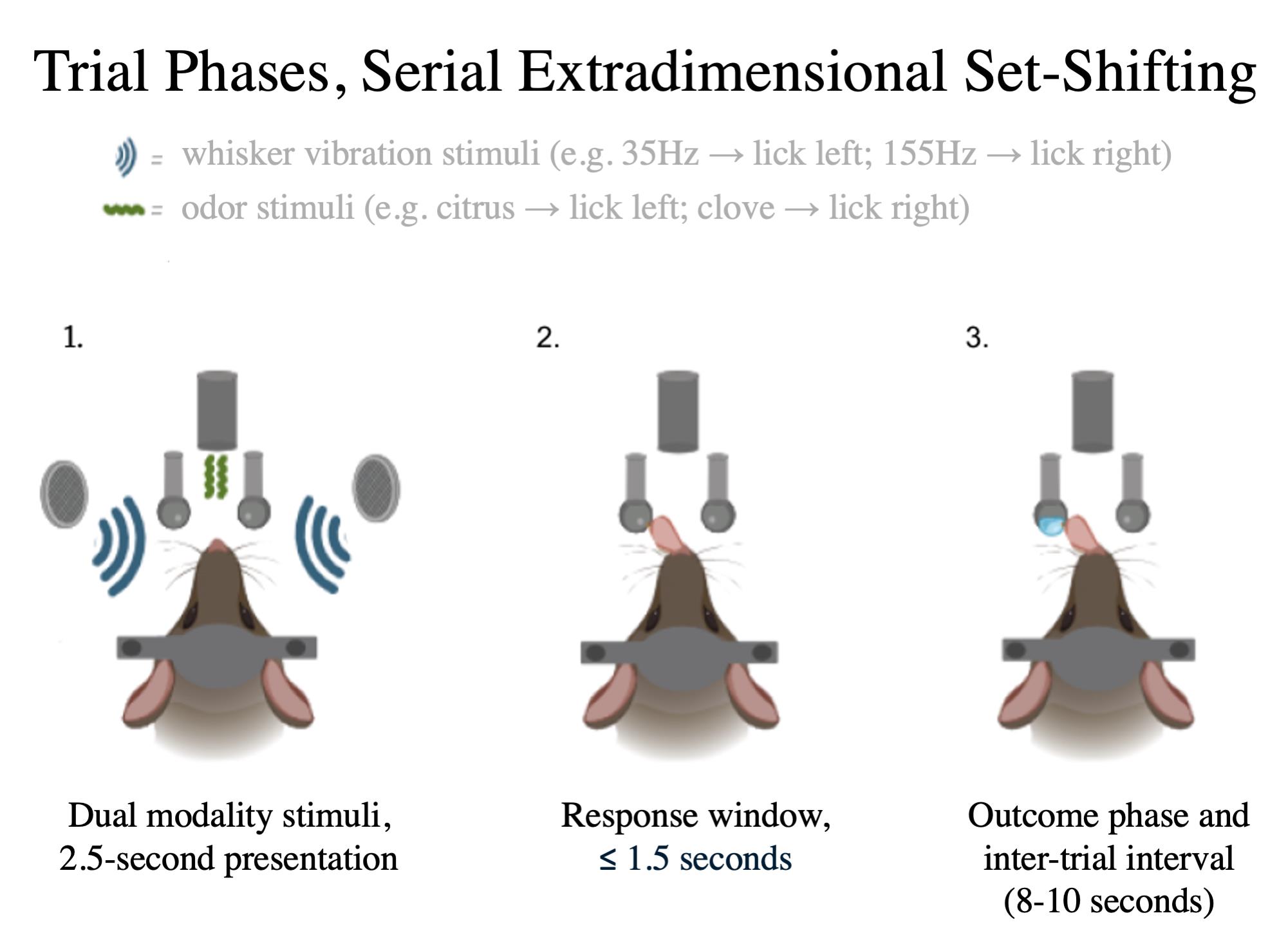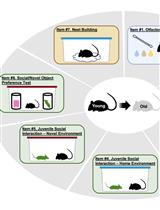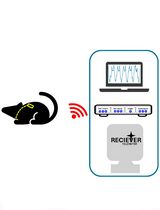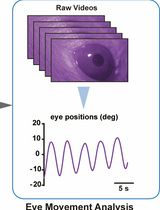- EN - English
- CN - 中文
Training Mice to Perform Attentional Set-Shifting Under Head Restraint
限制头部条件下小鼠注意设置转换训练
发布: 2025年09月05日第15卷第17期 DOI: 10.21769/BioProtoc.5442 浏览次数: 1271
评审: Xiaochen SunAnonymous reviewer(s)
Abstract
Cognitive flexibility is a process that involves dynamically adapting behavior to obtain a desired series of outcomes during continuously changing stimulus-response-reward associations. Attentional set-shifting is a multi-modal decision-making paradigm that tests cognitive flexibility, which can be useful for investigating neural circuitry that is disrupted in multiple neuropsychiatric disorders, including schizophrenia, Alzheimer’s disease, depression, and addiction. The canonical human attentional set-shifting paradigm for measuring cognitive flexibility is the Wisconsin Card Sorting Test, in which subjects sort cards based on rules that change periodically and adapt their behavior by utilizing feedback in the form of correct and incorrect outcomes. To transfer these tests to rodent models, previous techniques involved attentional set-shifting paradigms in free-roaming test chambers, in which animals associated cues with reward locations. The protocol presented here involves an analogous attentional set-shifting paradigm, in which water-restricted mice are head-restrained on a platform and must keep track of periodically switching stimulus-response-outcome associations. The mice must learn to associate odor or whisker vibration cues with a binary directional lick response that triggers water delivery. The mice are trained to respond by licking one of two spouts, in which the correct decision is dependent on the current stimulus rule. This protocol allows for behaviorally measuring cognitive flexibility alongside neural activity by pairing the head-restrained paradigm with 2-photon calcium imaging, optogenetics, and extracellular and intracellular physiology.
Key features
• Head-restraint design that allows for optogenetic manipulation, in vivo imaging, extracellular and intracellular electrophysiology, and other manipulations.
• Attentional set-shifting paradigm that measures cognitive flexibility in rodents.
Keywords: Set-shifting (设置转换)Graphical overview

Background
Cognitive flexibility is the ability to shift behavioral strategy based on context to receive a desired outcome. This process depends on the prefrontal cortex (PFC); lesion studies, optogenetic studies, and humans with damaged PFCs support a critical role for the PFC in cognitive flexibility [1–3]. Deficits in cognitive flexibility are associated with frontal lobe dysfunction, particularly in a range of neuropsychiatric disorders including schizophrenia [4], attention deficit/hyperactivity disorder [5], Alzheimer’s disease [6], major depressive disorder [7], and addiction [8]. Moreover, age-related cognitive deficits are predicted to rise dramatically given the predicted demographic trends in the coming decades [9]. No current treatment for these disorders specifically targets these deficits, in part because the neural circuitry of cognitive flexibility is not yet fully understood. Thus, it is necessary to incorporate techniques that directly manipulate or record specific neural populations to help distinguish the neural mechanisms and circuitry underlying cognitive flexibility. Circuit-specific investigations in rodent models will play a critical role in finding future treatments.
Rodent cognitive flexibility tasks involve animals learning a decision rule, typically motivated by consummatory reward, most frequently food or water. After dozens to hundreds of trials, the experimenter changes the task rule without cueing the animal, requiring the animal to change its strategy to continue to receive the same reward. These rodent paradigms are inspired by human neuropsychological tests. A prime example is the Wisconsin Card Sorting Task, which involves a deck of cards depicting objects that differ by three dimensions: color, shape, and number [1,9]. Participants are instructed to sort the cards into piles in one of these dimensions. Participants are never explicitly told the active rule, but rather, are given feedback after each trial (correct/incorrect). Once the participants learn which dimension is “active” and reach criterion accuracy, the task rule (active dimension) covertly switches. Thus, participants must adapt their strategy and apply a new rule to maintain positive feedback.
To identify relevant functional circuitry in cognitive flexibility, animal cognitive paradigms can be beneficial for enabling detailed in vivo imaging, electrophysiology, pharmacology, and optogenetic manipulation of neurons in relevant brain regions. Much of the foundational work in this area used free-roam versions of an attentional set-shifting (ASST) paradigm, which involved learning and alternating between two task rules associated with sensorimotor pairings, most frequently involving olfaction and somatosensation. Training for ASST involves multiple stages, with each building upon the previous stage [10–12]. A well-established example of the rodent ASST involves a testing chamber with multiple bowls containing digging media that vary by texture and odor. One bowl contains a food pellet on each trial [13,14], and the animal must switch between odor and texture rules to locate the food reward. The training begins with the animal learning simple discriminations between stimuli within one modality (e.g., gravel vs. sandy digging medium). As the training progresses, stimuli from the distractor modality are included (e.g., citrus vs. clove-scented bowls), eventually building up to the modality rule-switching ASST task. While this free-roam task incorporates a naturalistic foraging model, it carries constraints that include limits on trial numbers, extensive manual intervention by the experimenter, and limits on the neural recording techniques that can be employed. Some head-fixed paradigms have been used to study cognitive flexibility, which particularly incorporate virtual reality environment navigation (i.e., associating reward with a particular location within a virtual environment) [15] or environments depicting different visual gratings that are consequently associated with a reward [17]. It is also possible to model cognitive flexibility in head-restrained mice without requiring explicit stimulus discrimination by employing a 2-armed bandit or reversal paradigm. While these alternative approaches test cognitive flexibility, the cross-modal attentional set-shifting task presented here affords the unique advantage of building on an extensive experimental literature that spans basic, translational, and clinical work. Head-restrained experiments can also be designed to be temporally specific by having fixed times between stimulus, behavior, and reward—an advantage over free-roam navigation tasks. Trade-offs of the technique presented here include sacrificing naturalistic behavior (i.e., foraging) as well as the potential for stress associated with head-restraint [17]. However, proper and repeated habituation and handling help animals adjust to temporary restrictions.
This protocol includes instructions on behavioral training to prepare animals to learn the Serial Extradimensional Set-Shifting Task (SEDS). The SEDS task involves two modalities: whisker vibrations (e.g., 35 Hz vs. 155 Hz) and odorants (e.g., almond oil vs. nutmeg oil) [2]. Water-restricted mice are placed on a treadmill facing two lick spouts and must use one of these sensory stimuli to determine which spout releases water during each trial; both sensory modalities are presented concurrently, but within each trial block, only one of the two modalities signals the correct spout for each trial. In the paradigm presented here, as in the WCST and other rodent rule-switching paradigms [17], the rule switches each time the animal reaches criterion accuracy (80% correct within a 30-trial moving window). However, the switch frequency can also be set to a fixed trial number [18] or pseudo-randomized [19], depending on the constraints of the experiment.
Through modifications to the FlexRig hardware and Arduino software, the behavioral protocol can be edited for application to other tasks, including but not limited to delayed non-match to sample tasks, serial pattern learning tasks, concurrent schedule learning, multi-armed bandit tasks, and other conditioning paradigms.
Materials and reagents
Biological materials
1. Animals used for the training are C57BL/6 mice. Both male and female mice have been tested on this protocol, with both males and females performing with equal training time and response accuracy. Mice undergo surgeries and training at 4–6 weeks of age. Bodyweight is monitored daily to ensure it remains above 80% of baseline (pre-water restriction)
Laboratory supplies
1. MN Health 1cc Luer Lock syringe (MN Health, SLL-1ml, catalog number: 1040001)
2. Reusable oral gavage needles (PetSurgical, catalog number: AFN2425S)
Equipment
All equipment and associated software for building and running the FlexRig behavioral platform has been previously described in detail [20], including manufacturer information and software such as Arduino. No additional modifications have been made to the FlexRig since earlier publication.
1. A treadmill “base” to secure a head-restrained mouse that has the ability to stand below a microscope
2. A water module to reward water to animals during the training
3. A lick detection circuit module that can detect behavioral responses (i.e., licks to the lick spouts) from the animal
4. An olfactory presentation module that has the ability to release different types of odorant stimuli for the animal
5. An air vibration module for administering auditory or whisker cues
6. A platform for interfacing the FlexRig with an Arduino board
7. Arduino Mega 2560 programmable microprocessor
8. DF Robot sound card (DF Player Pro)
Software and datasets
1. Arduino IDE
2. (Optional) PuTTY Serial logging software for trial data logging (or alternative logging software)
3. FlexRigFunctions Arduino library (available through Spellman Lab website or the GitHub repository)
Example behavioral datasets are available upon written request.
Procedure
文章信息
稿件历史记录
提交日期: May 20, 2025
接收日期: Jul 22, 2025
在线发布日期: Aug 20, 2025
出版日期: Sep 5, 2025
版权信息
© 2025 The Author(s); This is an open access article under the CC BY-NC license (https://creativecommons.org/licenses/by-nc/4.0/).
如何引用
Kalajzic, K., Stout, J. J., Mitchell, A. C. and Spellman, T. (2025). Training Mice to Perform Attentional Set-Shifting Under Head Restraint. Bio-protocol 15(17): e5442. DOI: 10.21769/BioProtoc.5442.
分类
神经科学 > 行为神经科学 > 认知
神经科学 > 行为神经科学 > 感觉运动反应
您对这篇实验方法有问题吗?
在此处发布您的问题,我们将邀请本文作者来回答。同时,我们会将您的问题发布到Bio-protocol Exchange,以便寻求社区成员的帮助。
提问指南
+ 问题描述
写下详细的问题描述,包括所有有助于他人回答您问题的信息(例如实验过程、条件和相关图像等)。
Share
Bluesky
X
Copy link












